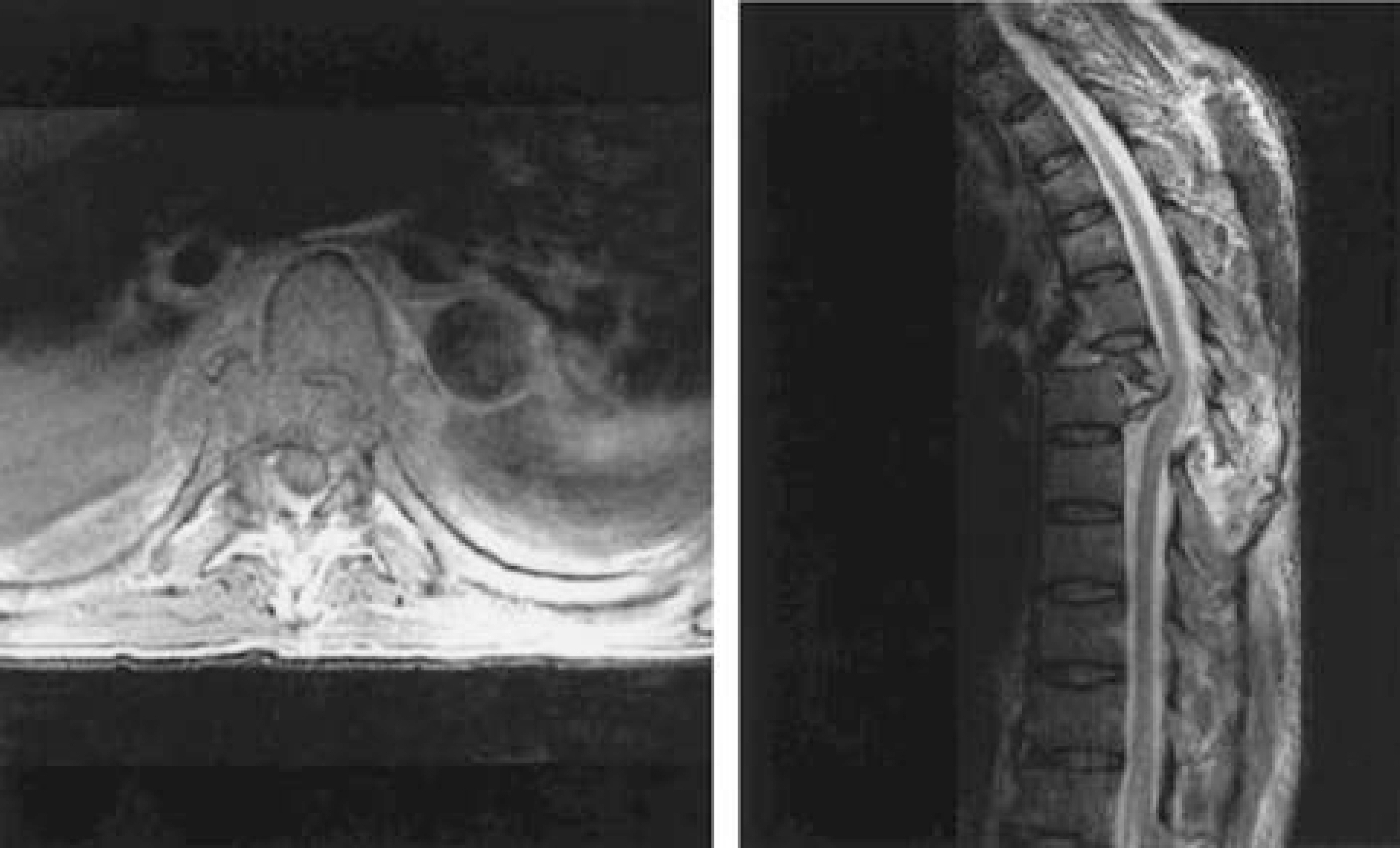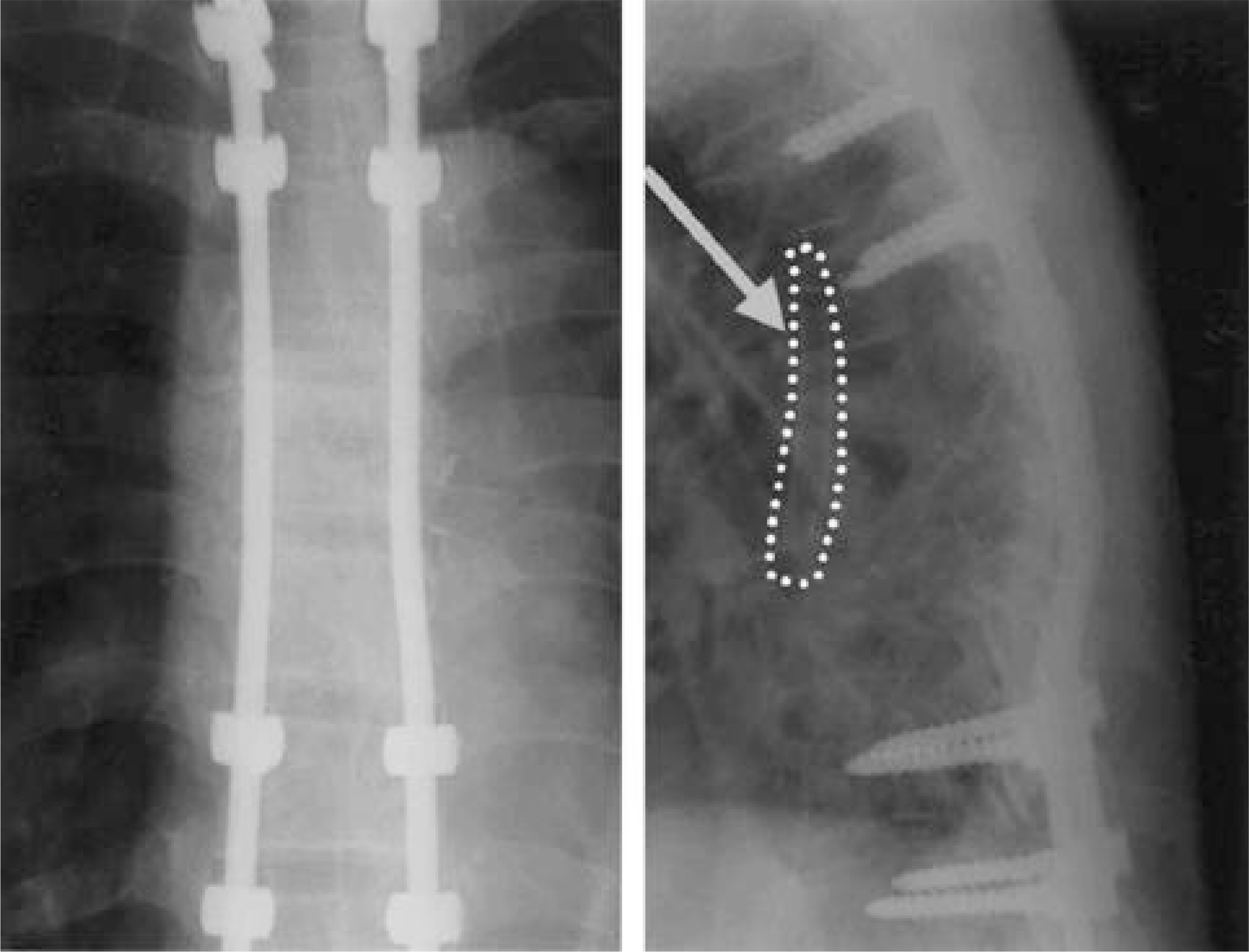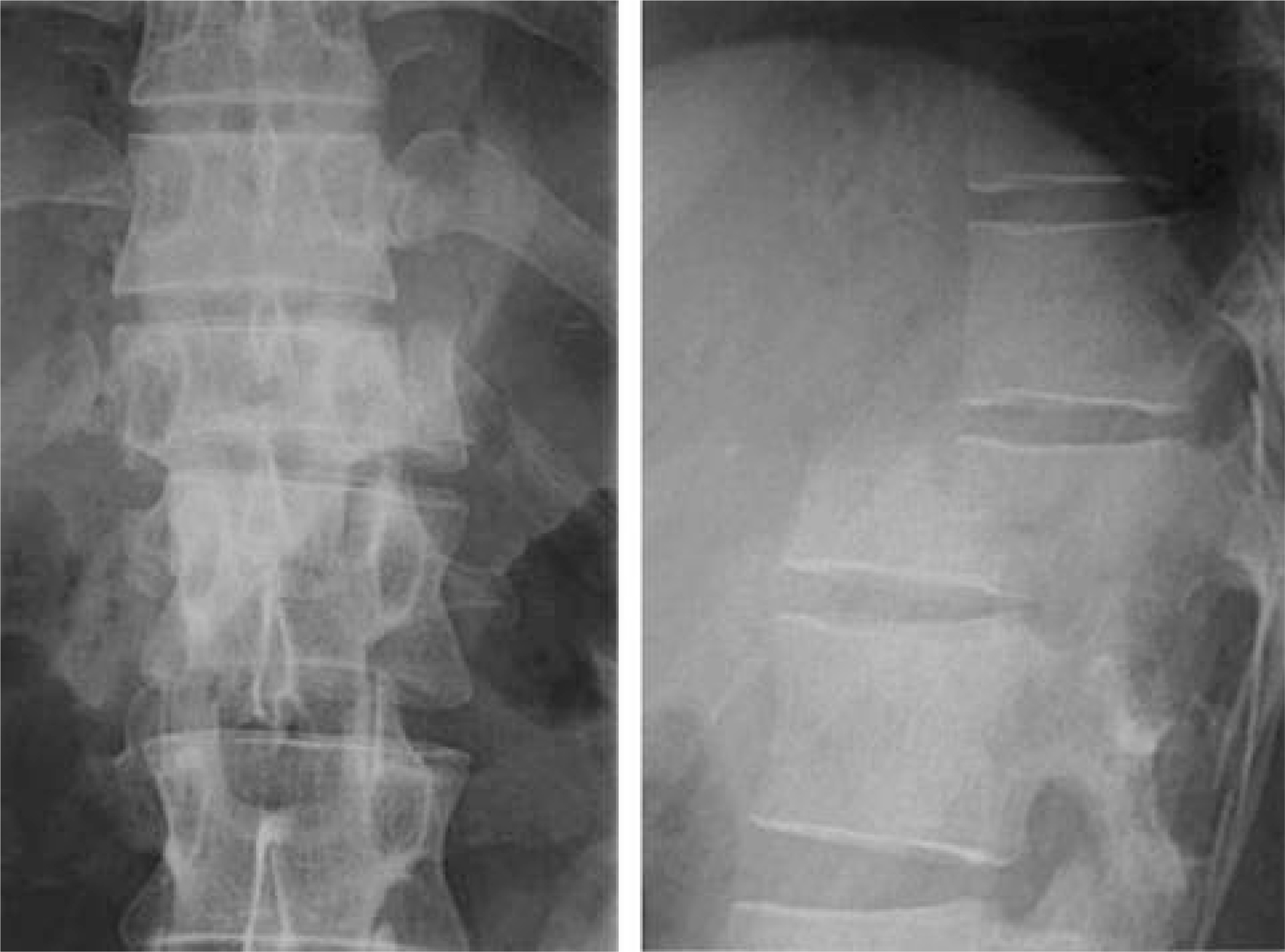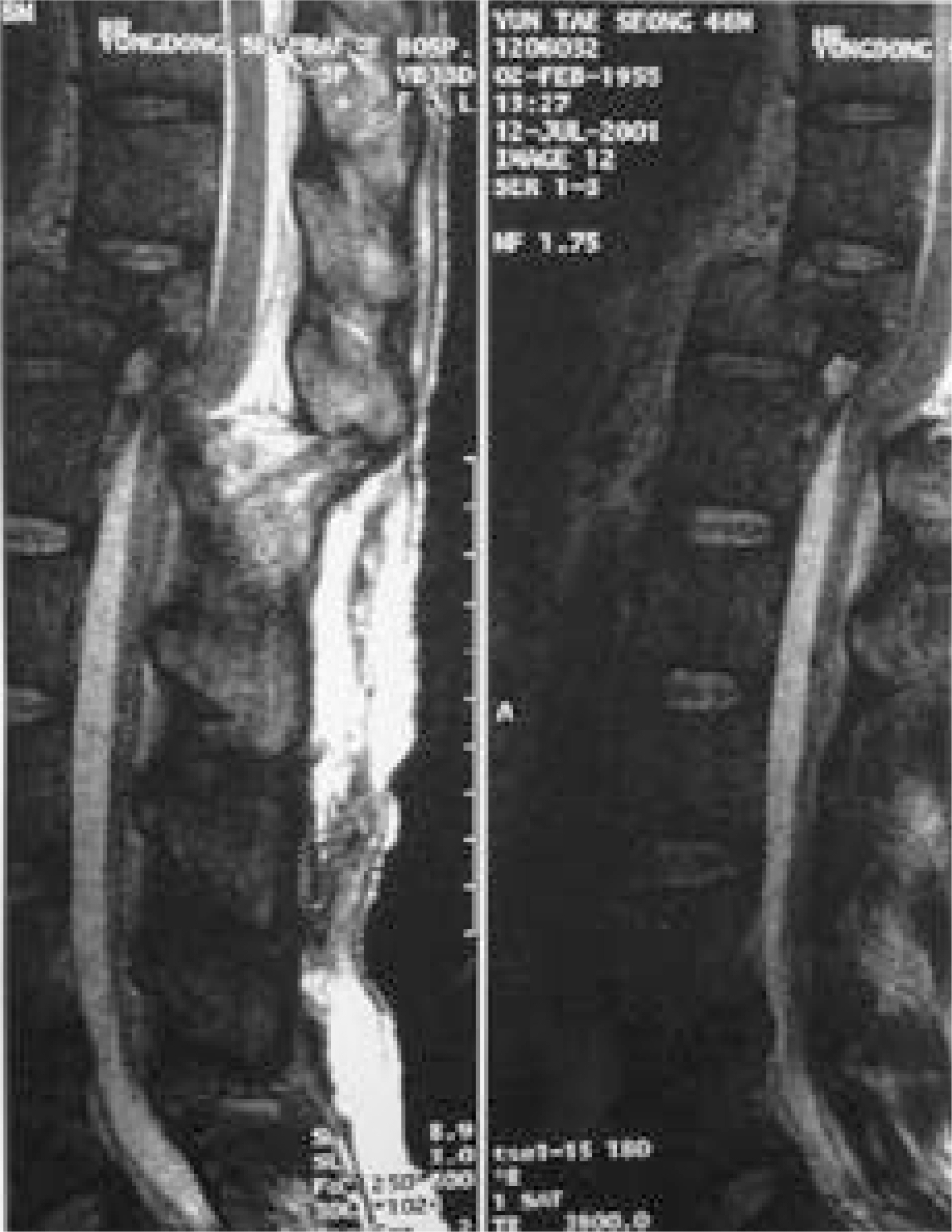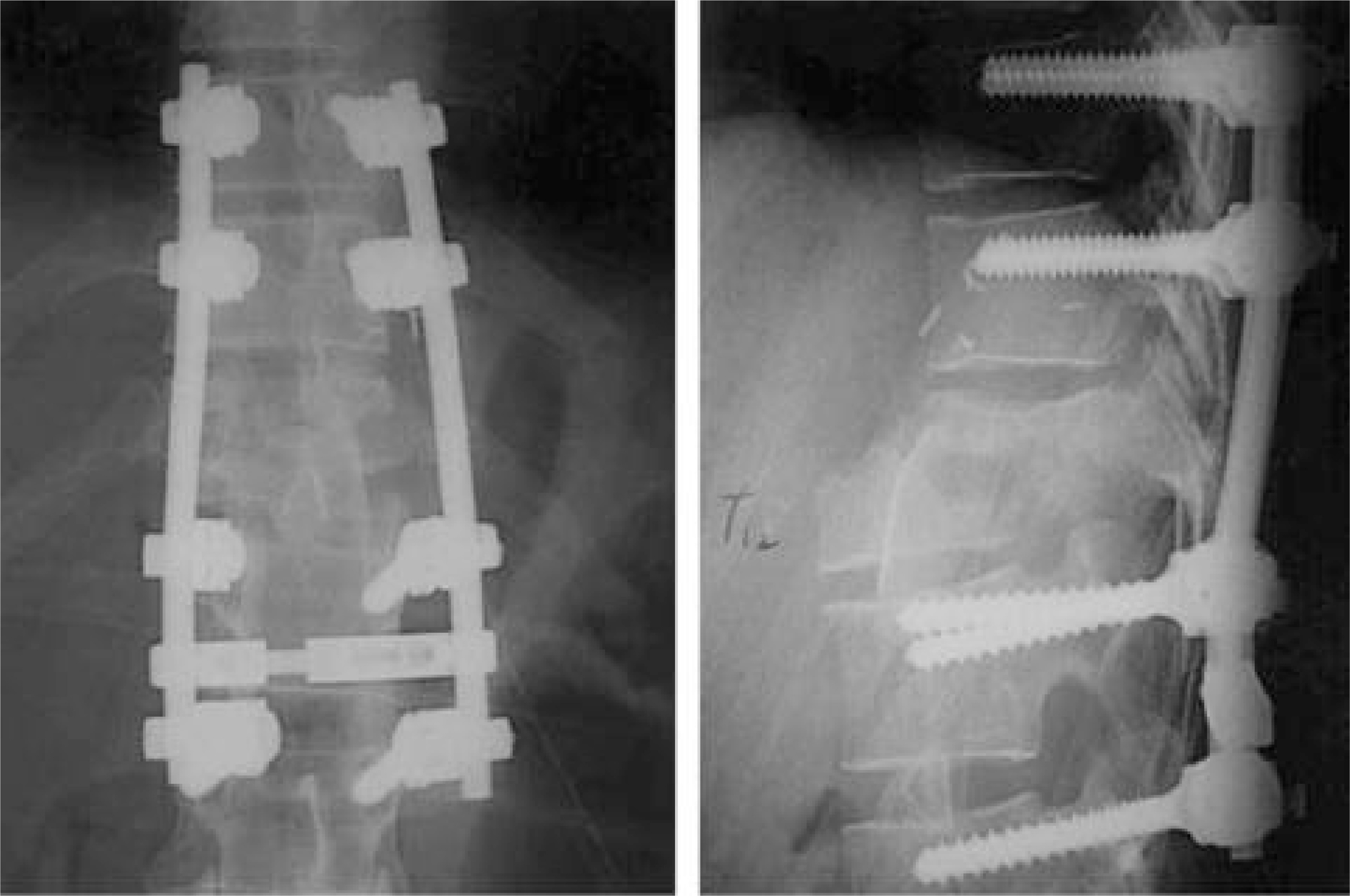J Korean Soc Spine Surg.
2006 Mar;13(1):69-74. 10.4184/jkss.2006.13.1.69.
Thoracic Fracture-Dislocations Without Spinal Cord Injury: Two Cases Reports
- Affiliations
-
- 1Department of Orthopaedic Surgery, Bundang CHA Hospital, College of Medicine, Pochon CHA University, Korea.
- 2Department of Orthopaedic Surgery, Yonsei University, Korea. haksunkim@yumc.yonsei.ac.kr
- KMID: 2040784
- DOI: http://doi.org/10.4184/jkss.2006.13.1.69
Abstract
- Thoracic fracture-dislocations reportedly lead to an 80% incidence of complete paraplegia. Thus, thoracic fracture-dislocations without cord injury are uncommon. There are a few cases of thoracic fracture-dislocations in which the neural sparing status was associated with separation of the posterior spinal structures, such as the pedicles and laminae. The authors experienced two cases of thoracic fracture-dislocations without spinal cord injury: one was a 50-year-old man who fell from the fourth floor of a building and sustained a T6-7 fracture-dislocation; and the other was a 43-year-old man who was involved in motorcycle accident and sustained a T12 fracture-dislocation. Segmental spinal instrumentation and fusion without open reduction was performed in each of the two cases and there has not been any abnormality detected on neurological examination at a minimum follow-up period of 2 years.
MeSH Terms
Figure
Reference
-
1). Bohler L. Die Technik der Knochenbruchbehandlung im Frieden und im Kriege. 1:9th-11th ed.Maudrich;Berlin: 1943.2). Bohlman H, Freehafer A, Dejak J. The results of treatment of acute injuries of the upper thoracic paralysis. J Bone Joint Surg. 1985; 67:360–369.3). Burke DC. Hyperextension injuries of the spine. J Bone Joint Surg. 1971; 53:3–12.
Article4). Dekutoki M, Conlan S, Salciccioli G. Spinal mobility and deformity after Harrington rod stabilization and limited arthrodesis of thoracolumbar fracture. J Bone Joint Surg. 1993; 75:168–176.5). Denis F. The three column spine and its significance in the classification of acute thoracolumbar spinal injuries. Spine. 1983; 8:817–831.
Article6). Denis F, Burkas JK. Shear fracture-dislocation of the thoracic and lumbar spine associated with forceful hyperextension (lumberjack paraplegia). Spine. 1992; 17:156–161.7). Hanley E, Eskay M. Thoracic spine fracture. Orthopedics. 1989; 12:689–696.8). Holdsworth F. Fractures, dislocations, and fracture-dislocations of the spine. J Bone Joint Surg. 1970; 52:1534–1551.
Article9). Liljenqvist U, Halm H, Castro W, et al. Thoracic fracture-dislocation without spinal cord injury: a case report and literature review. Europ Spine J. 1995; 4:252–256.10). Magerl F, Aebi M, Gertzbein S, et al. A comprehensive classification of thoracic and lumbar injuries. Europ Spine J. 1994; 3:184–201.
Article11). Miyasaka Y, Satomi K, Sugihara S, et al. Post er ior fracture-dislocation of the thoracic spine without neurologic deficit. A case report and short literature review. Spine. 1993; 18:2351–2354.12). Roaf R. A study of the mechanics of spinal injuries. J Bone Joint Surg. 1960; 42:810–823.
Article13). Shapiro S, Abel T, Rodgers RB. Traumatic thoracic spinal fracture dislocation with minimal or no cord injury. Report of four cases and review of the literature. J Neurosurg(Spine 3). 2002; 96:333–337.
- Full Text Links
- Actions
-
Cited
- CITED
-
- Close
- Share
- Similar articles
-
- Spinal Cord Injury Followign Electrical Accidents : Case Reports
- Radiological evaluation of myositis ossificans
- A Clinical Observation on Urinary Calculi in Traumatic Spinal Cord Injured Patient
- Fracture of Femur Neck with Heterotopic Ossification in Spinal Cord Injured Patient
- Traumatic Cervical Cord Transection without Facet Dislocations-A Proposal of Combined Hyperflexion-Hyperextension Mechanism: A Case Report


